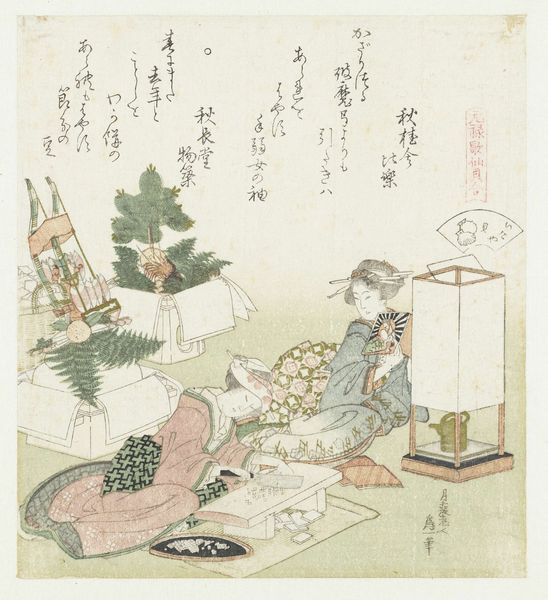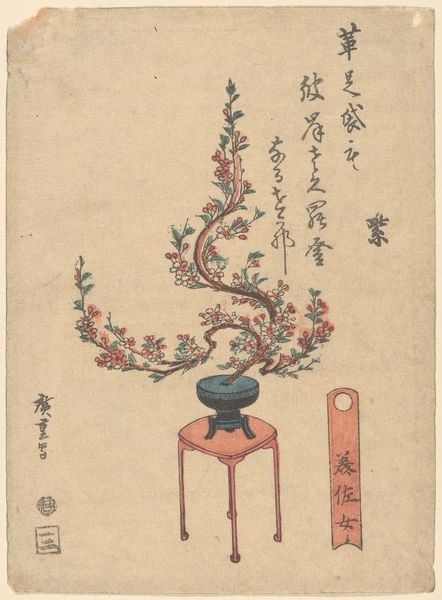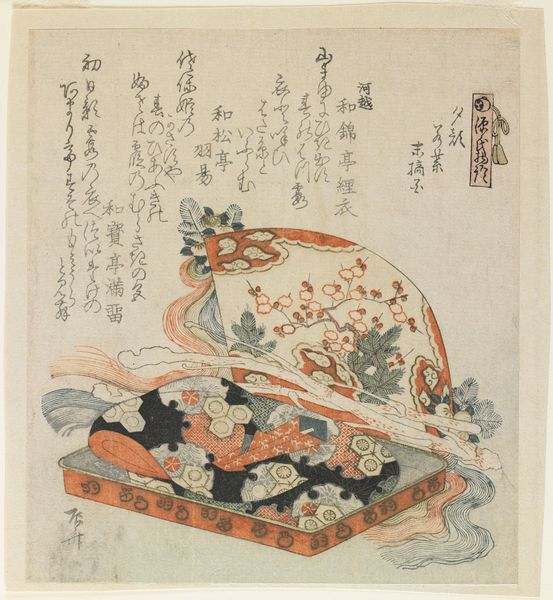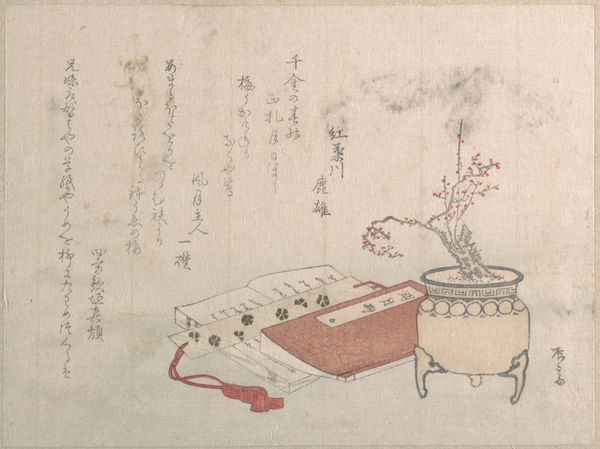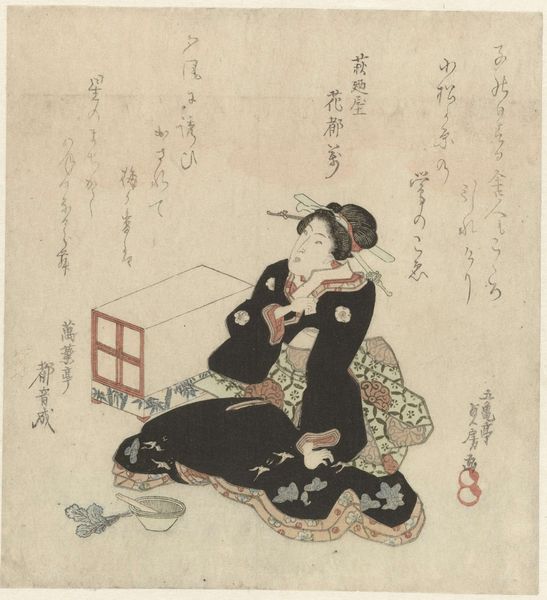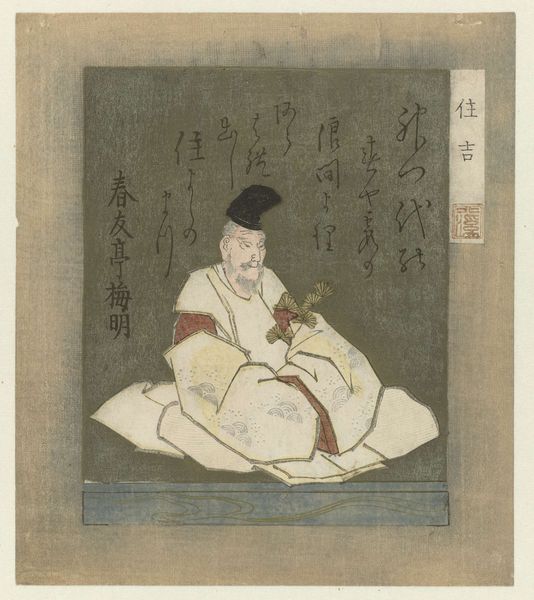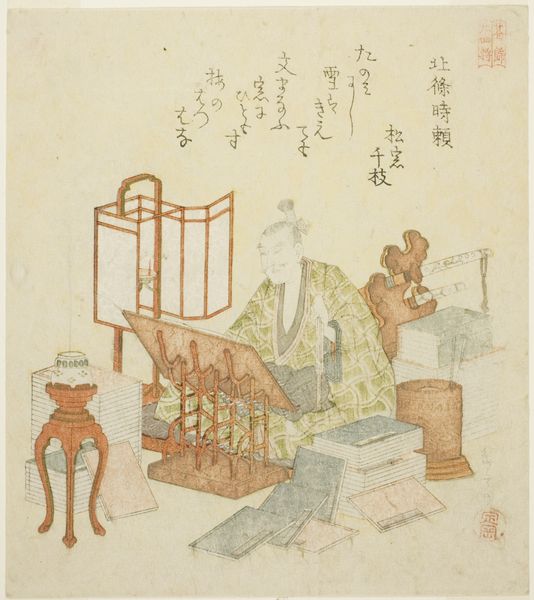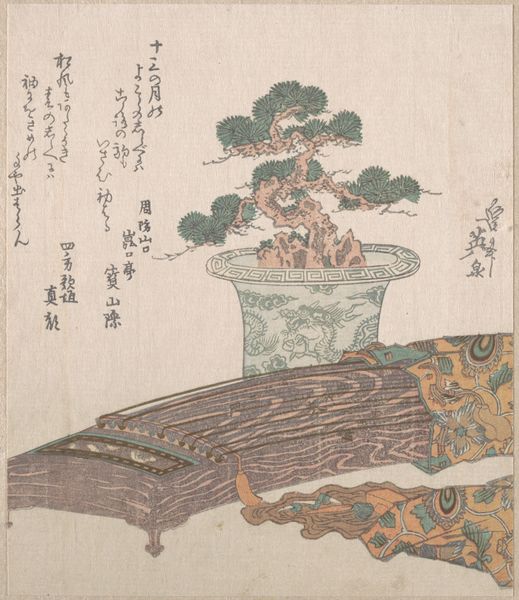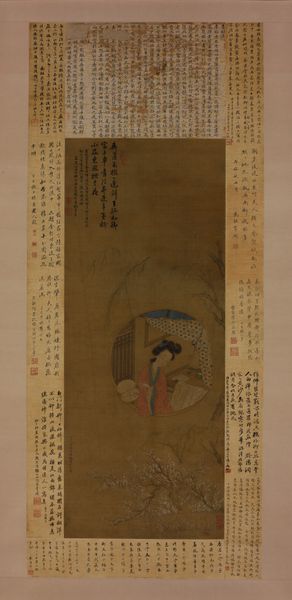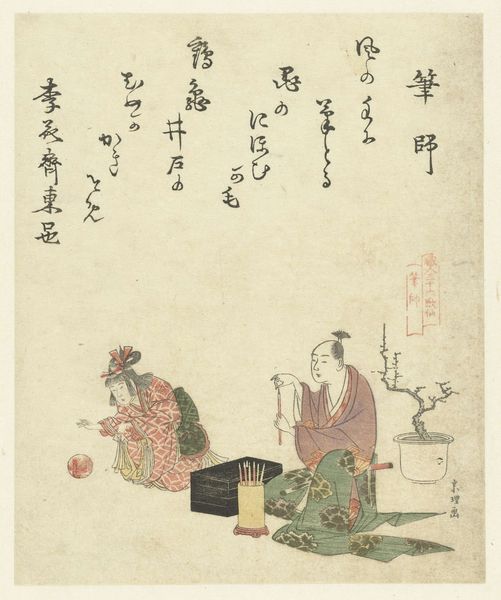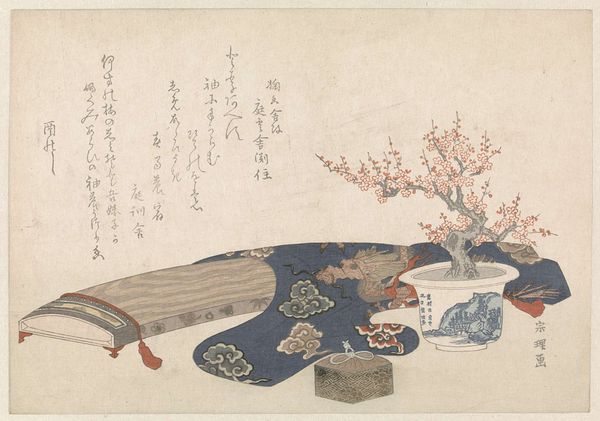
print, woodblock-print
#
portrait
#
water colours
# print
#
asian-art
#
ukiyo-e
#
coloured pencil
#
woodblock-print
#
watercolour illustration
#
genre-painting
Copyright: Public domain
Curator: This charming woodblock print by Keisai Eisen, titled "Decoration of three treasures and a mask of Otafuku," was created around 1823. The muted colours give it a sense of gentle serenity. What are your first thoughts? Editor: It's deceptively simple, isn't it? My eye is drawn to the tangible quality of the objects—the rough texture of the woodblock itself, the matte finish suggesting natural pigments, the very ordinary feel of that Otafuku mask. You can practically feel its coolness against the skin. Curator: Indeed. Eisen situates this work very much in the world of leisure and entertainment in early 19th-century Japan, reflected in the imagery. Otafuku, also known as Okame, was a popular character in Japanese folk tales and theatre, embodying good fortune. I think her inclusion is also representative of beauty standards. Editor: So, this mask, replicated through a labor-intensive printing process, becomes a consumer product that mediates our understanding of Japanese cultural values and how a face and performance come to define gender for the every-person of that society. The layering of print-making adds another dimension of the image in my view. Curator: Exactly. Think about the placement of the objects; this arrangement allows for a critical understanding of the social mores around display. The "three treasures"—pine, bamboo, and plum—symbolize longevity, resilience, and perseverance. Positioned alongside this popular theatre icon, this evokes deeper themes of societal health and harmony. Editor: And I notice they’re presented almost as goods or objects available for consumption. Consider the role of the artist as craftsman here too; not some detached genius, but one engaged in production. The repetition involved in woodblock printing democratized art to an extent, which changed how people perceived these symbols. Curator: Precisely, by examining "Decoration of three treasures and a mask of Otafuku", we come to realize art acts not in a vacuum but rather, it is deeply integrated with identity, social norms, and how that society creates shared meaning through the visual experience. Editor: A fascinating insight indeed! When looking closely at the processes and social background of this artwork, we are able to better understand production and consumption relationship within that society. Thank you for that framework for approaching a complex conversation.
Comments
No comments
Be the first to comment and join the conversation on the ultimate creative platform.
